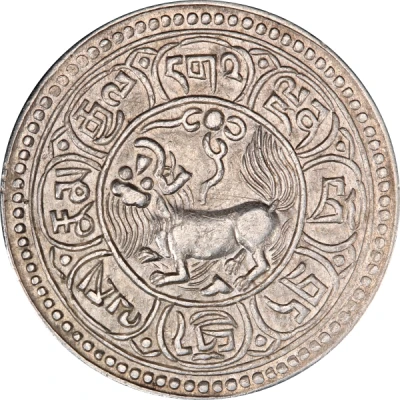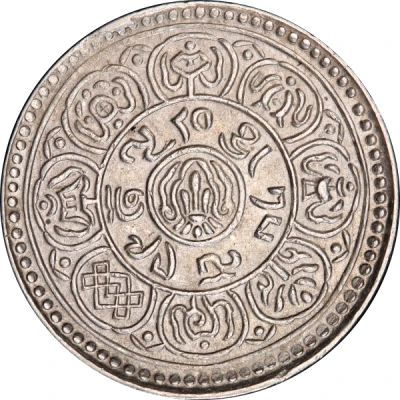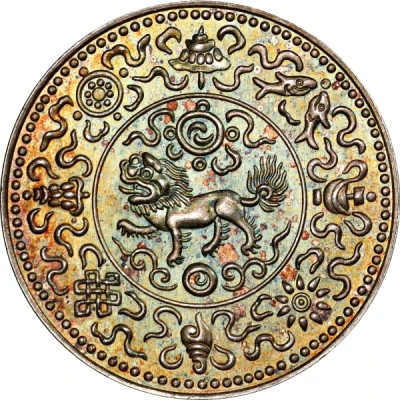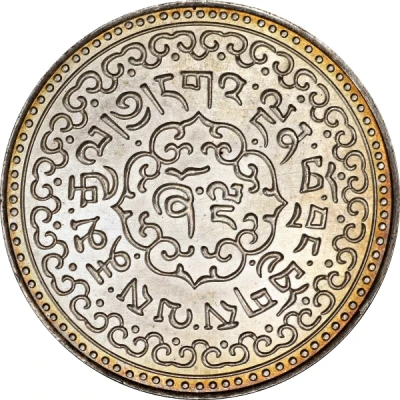


© PCGS
5 Sho
| Silver | 8.60 g | 29 mm |
| Issuer | Tibet (China) |
|---|---|
| Period | Ganden Phodrang (1642-1959) |
| Type | Standard circulation coin |
| Years | 1-60 (1913-1927) |
| Calendar | Tibetan (16th cycle) |
| Value | 5 Sho (0.5) |
| Currency | Srang (1792-1959) |
| Composition | Silver |
| Weight | 8.60 g |
| Diameter | 29 mm |
| Thickness | 1.2 mm |
| Shape | Round |
| Technique | Milled |
| Orientation | Medal alignment ↑↑ |
| Demonetized | Yes |
| Updated | 2024-10-04 |
| Numista | N#119401 |
|---|---|
| Rarity index | 91% |
Reverse
Triratna (triple gem) surrounded by Tibetan characters, all surrounded by the Buddhist Eight Auspicious symbols (a white parasol, a conch shell, a treasure vase, a victory banner, a dharma wheel, a pair of golden fish, an endless knot, and a lotus flower) within the petals of an eight-petalled lotus.
Script: Tibetan
Lettering: རབ་བྱུང་ ༡༥་ ལོ་ ༥༩་ ཞོ་ ལྔ་
Translation:
rab byung 15 lo 59 zho lnga
Cycle 15, year 59, five Sho
Edge
Reeded.
Comment
Krause reports a Y#18.1a for Year 53 and Year 56, specifying the composition as copper with some specimens being silver plated or silver washed. More information is needed on these pieces.Interesting fact
One interesting fact about the Standard circulation coin 5 Sho 1-60 (1913-1927) from Tibet (China) made of Silver weighing 8.60 g is that it features a unique blend of Tibetan and Chinese design elements. The obverse side of the coin features the Tibetan mantra "Om Mani Padme Hum" written in Tibetan script, while the reverse side features a stylized Chinese dragon and the coin's denomination in Chinese characters. This blend of cultures reflects the complex history and political relationship between Tibet and China during the time period in which the coin was minted.

